Anatomy of a Protest
We gathered together before the protest. Familiar faces, familiar roles. The planning had all been done in committee, but it was a familiar plan—put up a call on social media for a demo at Trump International Hotel at Columbus Circle at 5:30. Send out a media advisory. Give a heads up to our favorite photojournalists.
This was in response to the latest outrage from the Trump administration. We had anticipated this one, and even though we had only a few hours warning we had already printed signs in advance. Someone even brought small American flags to wave, not a normal fixture at our demos. A couple of banners—it is remarkably easy and cheap to get stuff printed, especially when you have a pool of talented graphical artists, and access to the internet.
In the cold we discuss our options. Two people set off on a scouting expedition to see where the police have placed barricades—they know we are coming, they are as much Facebook addicts as we are. Our plan is obvious—as we have before, we will organize a circular picket on the Broadway side of the hotel. Once our numbers increase enough to make that infeasible, we will march around the block to the front of the hotel, and then if we have achieved sufficient numbers down Broadway to Times Square.
Pre-action briefing
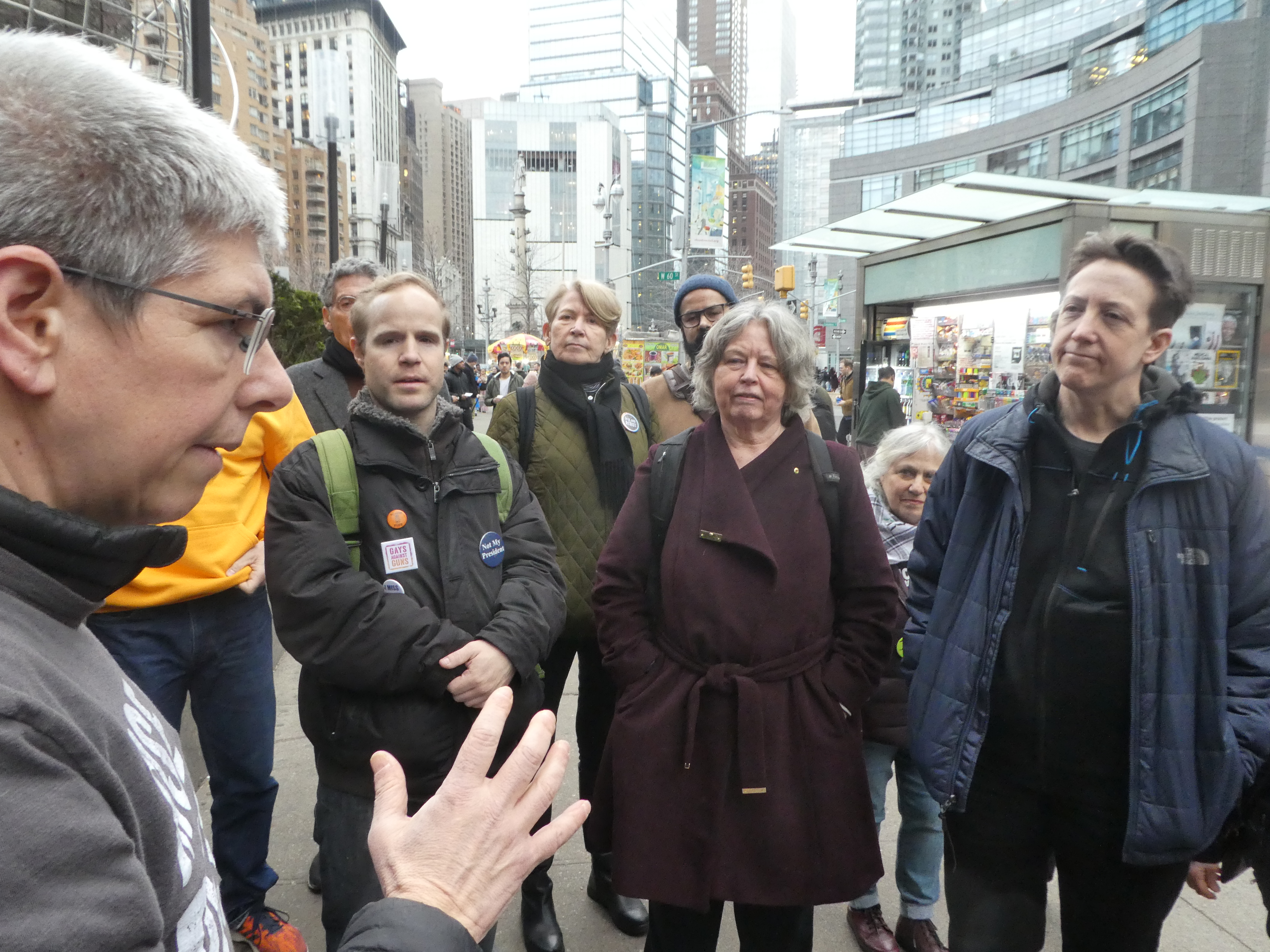
Familiar ground.
Another familiar face, detective Brian turns up from the commissioner’s office. His role is to advise the uniformed scene commander, an influencer but not in charge. I have ribbed him in the past about monitoring our Facebook page. I know he does, he knows that I know he does, it’s why he and all his NYPD friends are there. Not that we ever particularly want them, but times when we don’t want them there, we don’t put it on Facebook. But of course he knows we are committed to non-violence (not peaceful, we try to be as loud as we can), no one is going to get hurt.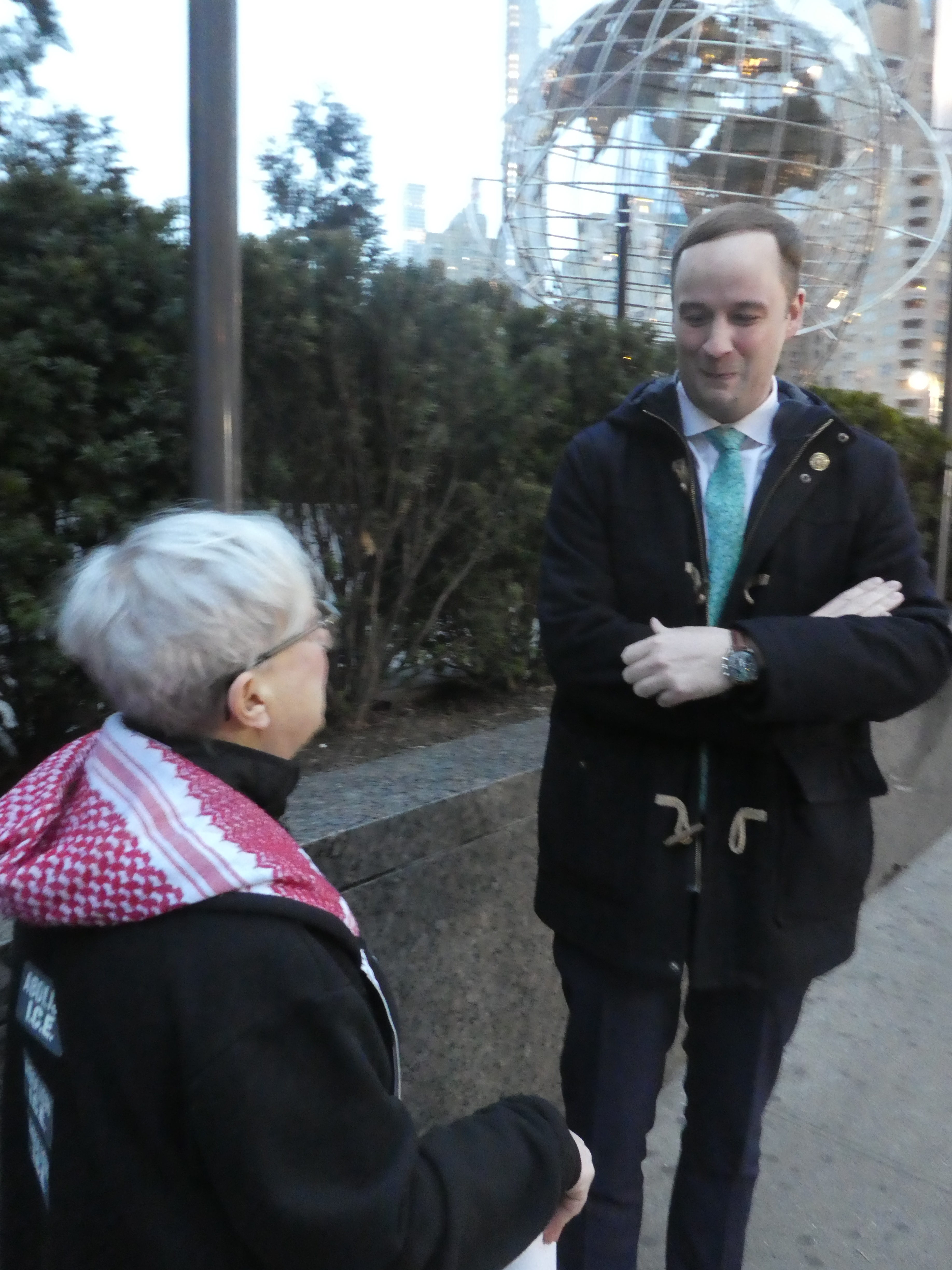
We throw around ideas for chants. Martin will lead us, he is a commanding presence, over six feet tall with a voice like a megaphone. The voice of so many of our protests. A stereotypical bear, he DJ’d his own wedding reception at a bar in the East Village last year—I really like his husband. 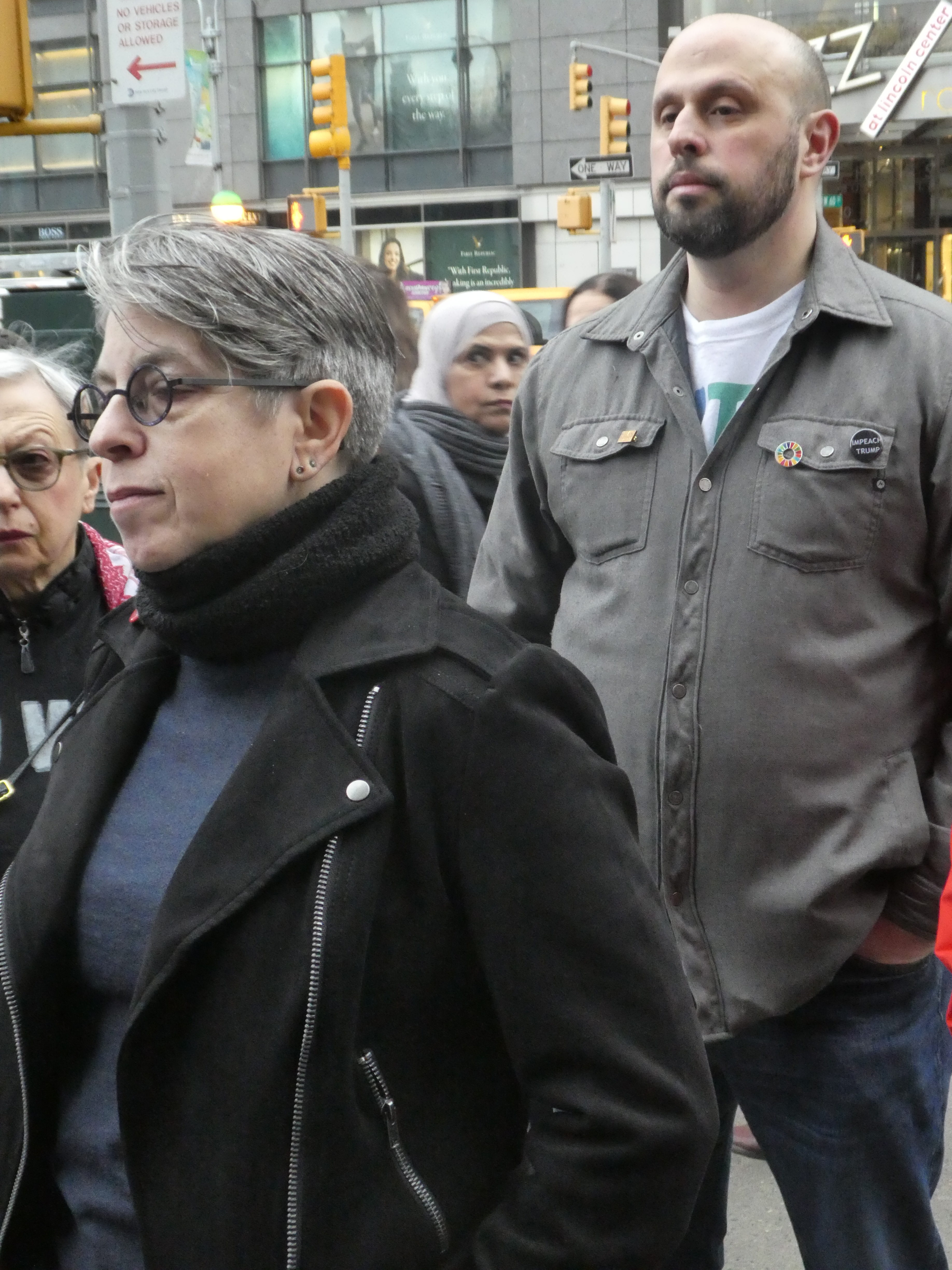
We discuss the possibility of arrests. As someone who does not wish to risk arrest (job worries), I will be one of the marshals for the rear. If we are to march down Broadway we can either do it on the sidewalk (our legal right) or in the street (which would require at least tacit police consent). It is always possible that communication with the police will fail, and some of us will wind up being arrested for marching in the street. As a rear marshal I am extremely unlikely to be caught in this situation.
But arrests are unlikely. There has never been an arrest at a demonstration that I have led, and although I am not the leader here, no one is planning on getting arrested.
I worry instead what I always worry about before a demonstration—what if no one turns up? Will our supporters tire of protest after protest, when the dismal litany of administration acts continues to grow. Are we just howling at the moon?
But of course, people do start arriving. More journalists than normal, this is a particularly timely demonstration. We are no doubt going to be on TV tonight. Hugs for our favorite freelancer photojournalists, we are here for them to take pictures. The media will show that there is resistance to Trump. There is always resistance. Big shout out here to Sandi Bachom and Erik McGregor.
We soon have enough people to mount a credible moving picket. The trick is to have two people, one at either end, as the poles around which protesters will march. Marshals at each end have to keep everyone moving, and maintain a lane so that pedestrians can still pass freely – you cannot block the sidewalk without a permit, you have to keep a lane free.
Martin’s booming voice leads us. “Who is the emergency?—Trump is the emergency!”, a catchy and satisfying call and response. As more people arrive, the marshals forming the end poles move further apart, size matters, but so does density.
The press are in rare form, I follow one into the center of the swirling crowd, on our knees to capture the eye wall of the storm. I hope she got her shot, I don’t think much of mine—I need more patience and dedication. And I am shirking my role as a marshal, though not needed yet I feel somewhat guilty, and perhaps a little ridiculous with a snapshot camera to her professional rig.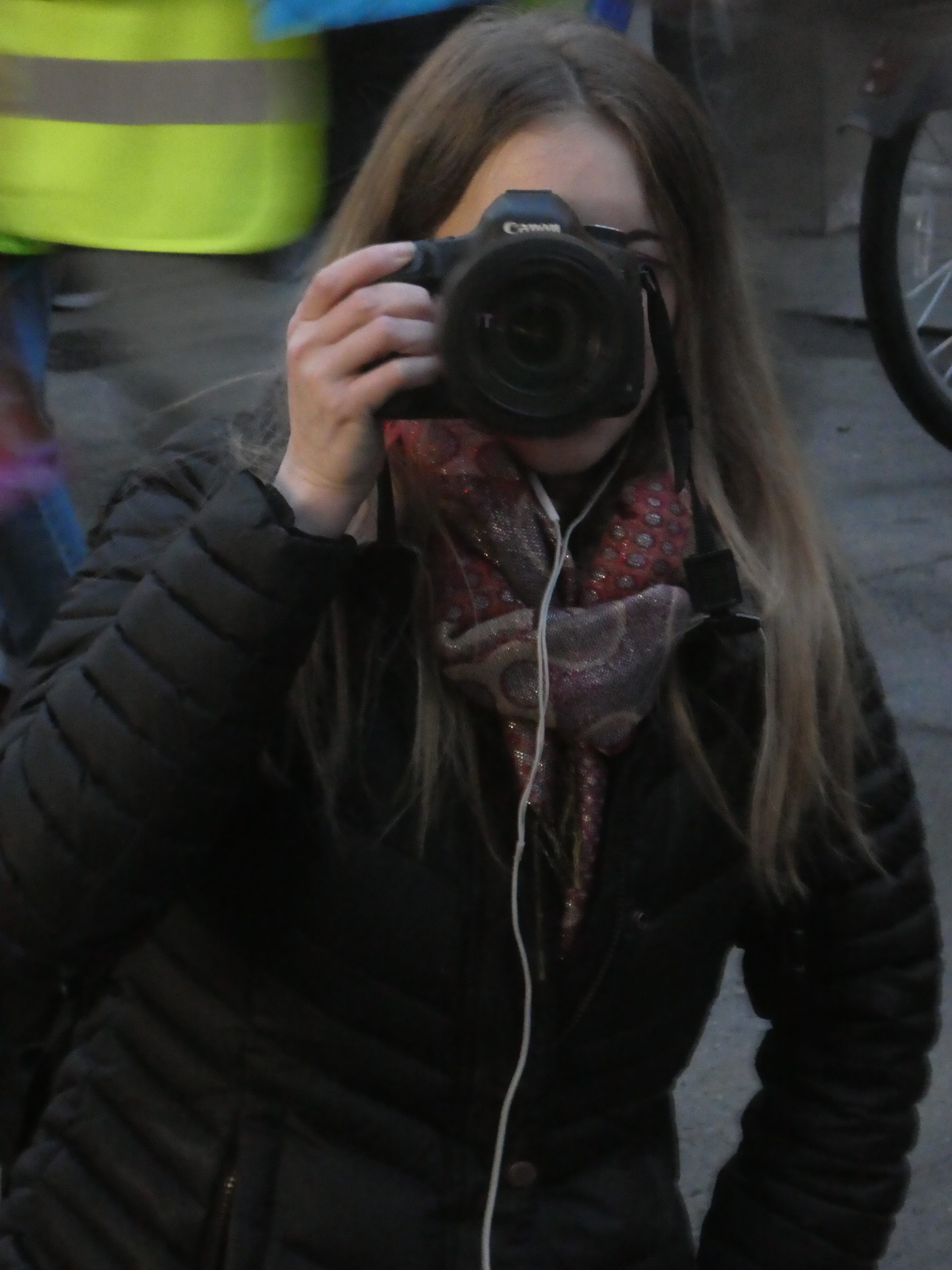
The rotating picket stretches further and further, in the gathering gloom. Sunset in the tall buildings of Manhattan can be quite sudden. It is not darkness, it is when the light is the glare of streetlights, not the sky’s now dimming glow.
The lead marshal signals it is time to march. The procession now heads forward rather than turning, and we encourage the tail still wrapped around the far end to keep going straight. As a rear marshal I encourage the stragglers as they make their final turn, and fall in behind them. For now, my camera goes away.
As I approach the corner on Central Park West, having only walked fifty yards, something is clearly happening. I make a noncommittal greeting to the police inspector at my side at the back of the line, and he spits that we marshals should do our job, and corral the protesters into the metal barricades that he has set up. That is not at all our intent, and it is our right to march on the street, not be penned up like cattle, no matter how much more convenient to the police that would be. I shrug, and he moves on.
Moments later I realize that the march has stopped. The lead marshal calls for the marchers to sit down in the street, as they negotiate with NYPD. The issue is that the police are not letting us march in front of the hotel, as is our right. They are insisting that we march on the far side of the street. They call for consensus as to what to do, which is silently given by the mass of people who crouch in waiting.
Then starts half an hour of bluff and posture. Most of the demonstrators who remain in the street know each other, and have mutually supported each other in many protests. They hold their ground. However, NYPD has made its position clear and public, and will not back down now. Neither side is in the mood to lose face. Having said at the outset that I do not intend to be arrested, I step off into the area that the police had cordoned off as a pen, which has unintentionally become an impromptu press box. My camera is out again.
As the stand-off continues, the police bring out loudspeakers, playing taped warnings of arrests for disorderly conduct if protesters do not leave the street. Of course, they would gladly leave the street, but only for the right side of the street. It’s a game of cards, where neither side wants to lead first for fear of being trumped.
More and more police arrive. Ranks of motorcycles block the protesters on the sidewalk from the protesters on the streets. Large vans appear. The tape in the loudspeaker makes more and more ominous threats. Officers with Strategic Response Group logos on their jackets start to predominate in the street.
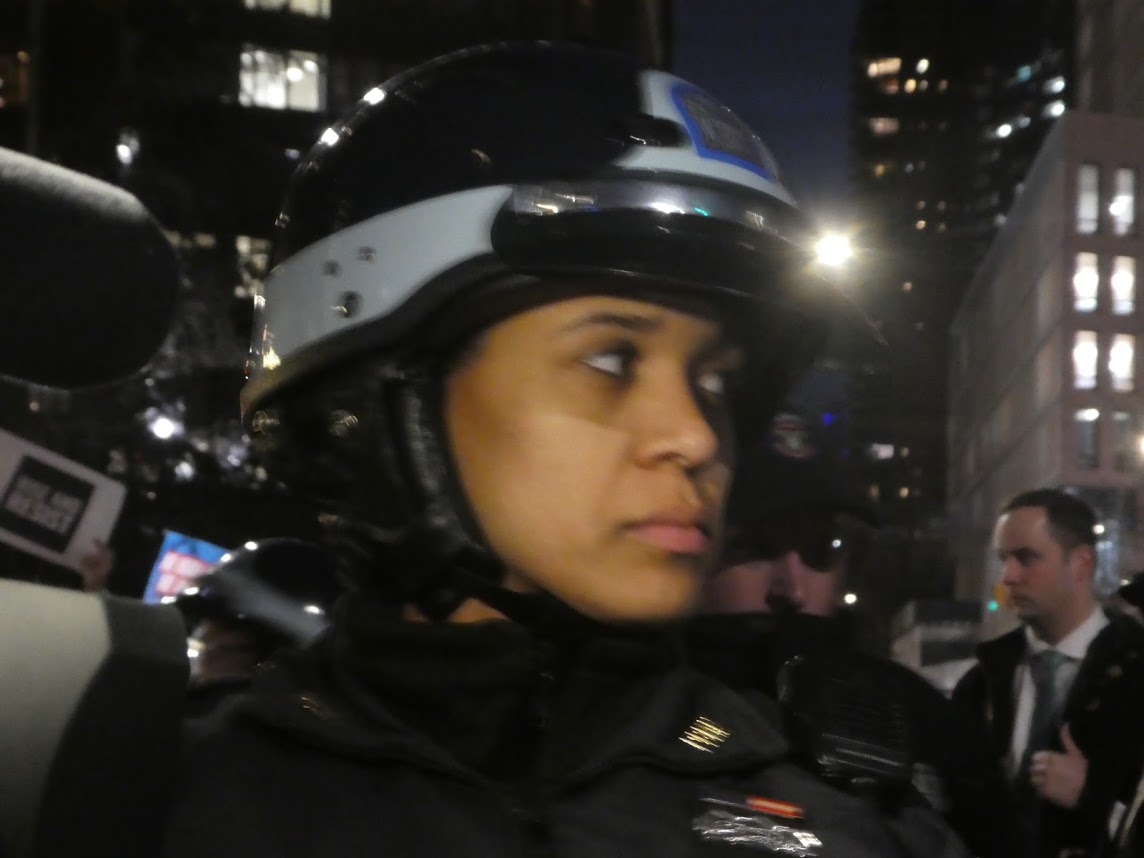
Most of the cops stand around waiting. Not the elite arrest squads of the SRG, they just form a line of blue to demarcate the protesters sitting down from the rest of us. It will continue until it is over, and nothing will change that.
Eventually the tape is switched from “if you remain in the street you will be arrested” to “since you remain in the street, you will be arrested”. There are threats of further charges if there is resistance to accompanying the officers to the “prisoner transports”. One at a time, I see my friends cuffed with white plastic zip ties, and led without resistance into the vans, as we cheer them on for their courage and commitment.
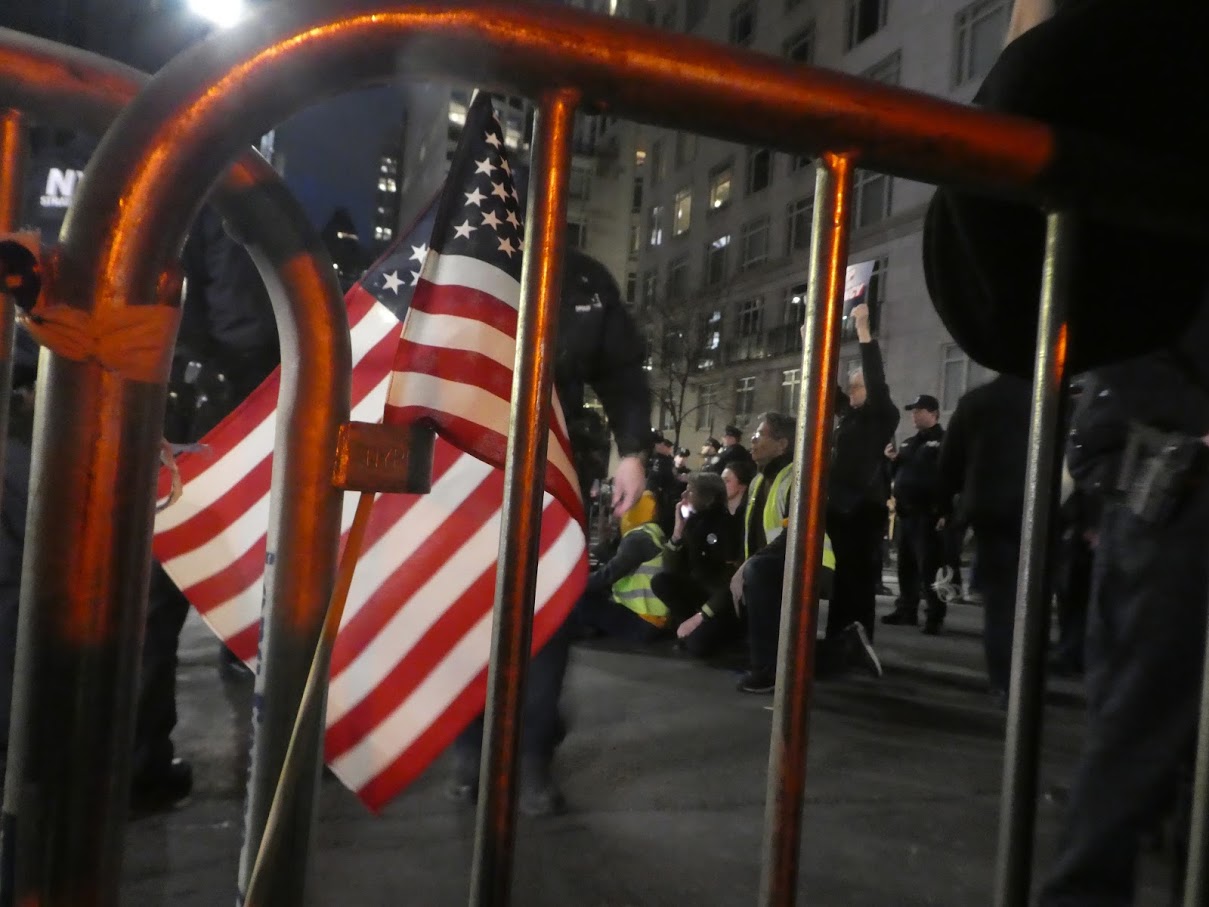
By 6:30 the excitement is over. The vans have gone with our heroes to the 7th Precinct on the other side of Manhattan, home of the SRG. After the chanting starts to slow, I disperse the crowd on my side of the street, sending them to a demonstration that an immigration rights group has scheduled for later in Union Square.
I get a ride down to the 7th Precinct, where my friends will be no doubt held for hours. A lawyer arrives, she goes into the precinct and gets the status. A friend and I find dinner, cajun chicken we eat on milk crates turned up on the sidewalk. It is a cold long wait, but a carnival atmosphere develops. People bring supplies: water, bags of nuts, clementines. We get reports of press coverage—we have made Rachel Maddow!
By 10:30 the arrestees start being released one at a time, and I go home to reflect over a beer. We clearly accomplished something, our rapidly organized demonstration was so timely that it has been picked up by many national outlets. Our small numbers have moved the tiller of the national conversation, as we fight to tack the ship of state. No one reports that the arrests were about which side of the street we would march on.
The charges are all civil violations, not even misdemeanors. On the same level as being cited for a noisy party.